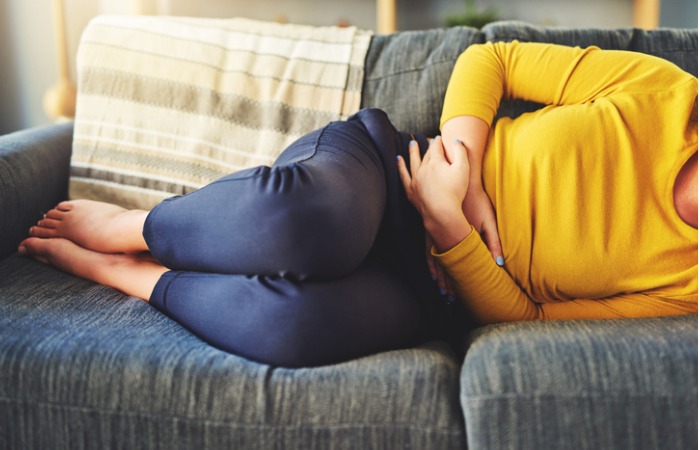
Endometriosis is a painful condition that occurs when the tissue that lines the inside of the uterus, known as the endometrium, grows outside the uterus.
An estimated 10% of women of childbearing age have endometriosis. Many go undiagnosed, so that percentage is probably low. It is the No. 1 cause of female infertility, and its painful symptoms can have a serious effect on quality of life.
March is Endometriosis Awareness Month, so it’s a good time to raise awareness of this condition, which affects some 200 million women worldwide. Here are answers to some common questions:
How does endometriosis affect the body?
Endometriosis can affect the ovaries, bladder, fallopian tubes, bowels, or the tissue lining the pelvis. It is rarely found in other areas of the body. The abnormal endometrial tissue still acts as it normally would, thickening, breaking down, and bleeding with each menstrual cycle.
Because there is nowhere for the tissue to exit the body, it becomes trapped. This causes irritation and patches of scar tissue called “implants,” “nodules,” or “lesions”. This scar tissue is most often found:
- On or under the ovaries.
- On the fallopian tubes, which carry egg cells from the ovaries to the uterus.
- Behind the uterus.
- On the tissues that hold the uterus in place.
- On the bowels or bladder.
What causes endometriosis?
The cause is unknown.
What are the symptoms?
Women and physicians may not always recognize the various symptoms and ways in which the disorder can appear. Symptoms can include painful periods, pain during sex, or infertility. Less common symptoms are chronic pelvic pain, pain during urination or bowel movements, and pain in the lower back or thighs during periods. The pain can be severe for some women, while others have little or no pain.
Who is at risk?
Endometriosis is most commonly diagnosed in women in their 20s and 30s, but it can affect any female who menstruates. Certain factors affect your risk of getting it, as listed below:
Higher risk
- You have a mother, sister, or daughter with endometriosis.
- Your period started before age 11.
- Your monthly cycles are short (fewer than 27 days).
- Your menstrual cycles are heavy and last more than 7 days.
Lower risk
- You have been pregnant before.
- Your periods started late in adolescence.
- You regularly exercise more than 4 hours a week.
- You have a low amount of body fat.
How is endometriosis diagnosed?
Surgery is the only way to know for sure that you have endometriosis. To help avoid surgery, most patients with symptoms and physical findings common to endometriosis are diagnosed with the condition and treated for it. First, your health care provider will ask about your symptoms and medical history, then perform a pelvic exam and order a pelvic ultrasound. Hormonal treatment often will be prescribed at this point, and it provides excellent pain relief for many women.
Laparoscopic surgery is reserved for patients with severe endometriosis symptoms that do not respond to hormonal therapy. Laparoscopic or “minimally invasive” surgery is performed by inserting a thin tube with a camera and light into the abdomen to look for signs of endometriosis and repair it, when possible.
How is it treated?
There are several treatment options for related pain and infertility. Health care providers consider many factors when determining the best treatment, including age, severity of symptoms, and whether you wish to have children. Not all treatments work well for all women. Also, symptoms may return after the treatment is stopped, or in the case of surgery, as more time passes after the procedure.
Treatments for endometriosis pain:
- Pain relievers
- Hormone therapy, including birth control pills, progestin therapy, and gonadotropin-releasing hormones (GnRH). GnRH therapy causes a temporary menopause but helps control the growth of endometriosis.
- Surgical treatments for severe pain, including procedures to remove the endometriosis patches or cut certain nerves in the pelvis. The pain may return within a few years after surgery. For severe pain, a hysterectomy may be an option.
- Treatment controls the pain for most patients. The pain related to endometriosis tends to lessen as women age, particularly for those who have had children.
Treatments for infertility caused by endometriosis:
- Most women with endometriosis can get pregnant, but many will need the assistance of a fertility specialist.
- Laparoscopic surgery to remove the endometriosis patches is reserved for the most severe cases.
- The mainstay of treatment is inducing ovulation to increase the number of available eggs, along with intra-uterine insemination to maximize the number of available sperm.
- In vitro fertilization is used when other treatment methods are unsuccessful.
UAB Medicine Obstetrics and Gynecology Services offers complete OB/Gyn care, including medical and surgical treatment of complex gynecological conditions. Learn more here.
